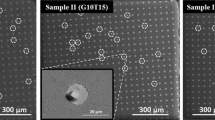Abstract
Spontaneous Sn whisker growth is a surface relief phenomenon of creep, driven by a compressive stress gradient. No externally applied stress is required for the growth, and the compressive stress is generated within, from the chemical reaction between Sn and Cu to form the intermetallic compound Cu6Sn5 at room temperature. To obtain the compressive stress gradient, a break of the protective oxide on the Sn surface is required because the free surface of the break is stress-free. Thus, spontaneous Sn whisker growth is unique that stress relaxation accompanies stress generation. One of the whisker challenging issues in understanding and in finding effective methods to prevent spontaneous Sn whisker growth is to develop accelerated tests of whisker growth. Use of electromigration on short Sn stripes can facilitate this. The stress distribution around the vicinity and the root of a whisker can be obtained by using the micro-beam X-ray diffraction utilizing synchrotron radiation. A discussion of how to prevent spontaneous Sn whisker growth by blocking both stress generation and stress relaxation is given.















Similar content being viewed by others
References
C. Herring, J.K. Galt, Phys. Rev. 85, 1060 (1952)
G.W. Sears, Acta Metall 3, 367 (1955)
A.P. Levitt, in Whisker Technology (Wiley-Interscience, New York, 1970).
U. Lindborg, Metall. Trans. 6A(8), 1581 (1975)
T. Nagai, K. Natori, T. Furusawa, J. Jpn. Inst. Met. 53, 303 (1989)
I.A. Blech, P.M. Petroff, K.L. Tai, V. Kumar, J. Cryst. Growth 32(2), 161 (1975)
N. Furuta, K. Hamamura, Jpn. J. Appl. Phys. 8(12), 1404 (1969)
J.D. Eshelby, Phys. Rev. 91, 755 (1953)
F.C. Frank, Phil. Mag. 44, 854 (1953)
S. Amelinckx, W. Bontinck, W. Dekeyser, F. Seitz, Phil. Mag. 2, 355 (1957)
W.C. Ellis, D.F. Gibbons, R.C. Treuting, in Growth and Perfection of Crystals, eds. by R.H. Doremus, B.W. Roberts, D. Turnbull (John Wiley, New York, 1958), pp. 102.
R. Kawanaka, K. Fujiwara, S. Nango, T. Hasegawa, Jpn. J. Appl. Phys. Part I 22(6), 917 (1983)
U. Lindborg, Acta Metall. 24(2), 181 (1976)
K.N. Tu, Acta Metall. 21(4), 347 (1973)
W.J. Boettinger, C.E. Johnson, L.A. Bendersky, K.-W. Moon, M.E. Williams, G.R. Stafford, Acta Materialia 53, 5033 (2005)
G.T.T. Sheng, C.F. Hu, W.J. Choi, K.N. Tu, Y.Y. Bong, L. Nguyen, J. Appl. Phys. 92, 64 (2002)
W. J. Choi, G. Galyon, K.N. Tu, T.Y. Lee, in Handbook of Lead-free Solder Technology for Microelectronic Assemblies, eds. by K.J. Puttlitz, K.A. Stalter (Marcel Dekker, New York, 2004).
Ivan Amato, Fortune magazine 151(1), 27 (2005)
Rob Spiegel, Electronic News 03/17/2005
http://www.nemi.org/projects/ese/tin_whisker.html
K.N. Tu, R.D. Thompson, Acta Met. 30, 947 (1982)
K.N. Tu, Phys. Rev. B49, 2030 (1994)
P.G. Shewmon, Diffusion in Solids (McGraw-Hill, New York, 1963)
D.A. Porter, K.E. Easterling, Phase Transformations in Metals and Alloys (Chapman and Hall, London, 1992)
K. Zeng, R. Stierman, T.-C. Chiu, D. Edwards, K. Ano, K.N. Tu, J. Appl. Phys. 97, 024508-1 (2005)
B.-Z. Lee, D.N. Lee, 46(10), 3701 (1998)
C.Y. Chang, R.W. Vook, Thin Solid Films 228, 205 (1993)
W.J. Choi, T.Y. Lee, K.N. Tu, N. Tamura, R.S. Celestre, A.A. MacDowell, Y.Y. Bong, L. Nguyen, Acta Mat. 51, 6253 (2003)
K.N. Tu, Phys. Rev. B49, 2030 (1994)
R.M. Fisher, L.S. Darken, K.G. Carroll, Acta Metallurgica 2, 368 (1954)
V.K. Glazunova, N.T. Kudryavtsev, Translated from Zhurnal Prikladnoi Khimii, 36(3), 543 (March 1963)
S.M. Arnold, Proc. 43rd Annual Convention of the American Electroplater’s Soc., vol. 43, (1956), pp. 26–31
S.H. Liu, Chih Chen, P.C. Liu, T. Chou, J. Appl. Phys. 95(12), 7742 (2004)
I.A. Blech, J. Appl. Phys. 47, 1203 (1976)
George T. Galyon, Annotated Tin Whisker Bibliography
A.T. Wu, K.N. Tu, J.R. Lloyd, N. Tamura, B.C. Valek, C.R. Kao, Appl. Phys. Lett. 85, 2490 (2004)
A.T. Wu, A.M. Gusak, K.N. Tu, C.R. Kao, Appl. Phys. Lett. 86, 241902 (2005)
Author information
Authors and Affiliations
Corresponding author
Rights and permissions
About this article
Cite this article
Tu, K.N., Chen, C. & Wu, A.T. Stress analysis of spontaneous Sn whisker growth. J Mater Sci: Mater Electron 18, 269–281 (2007). https://doi.org/10.1007/s10854-006-9029-z
Published:
Issue Date:
DOI: https://doi.org/10.1007/s10854-006-9029-z



